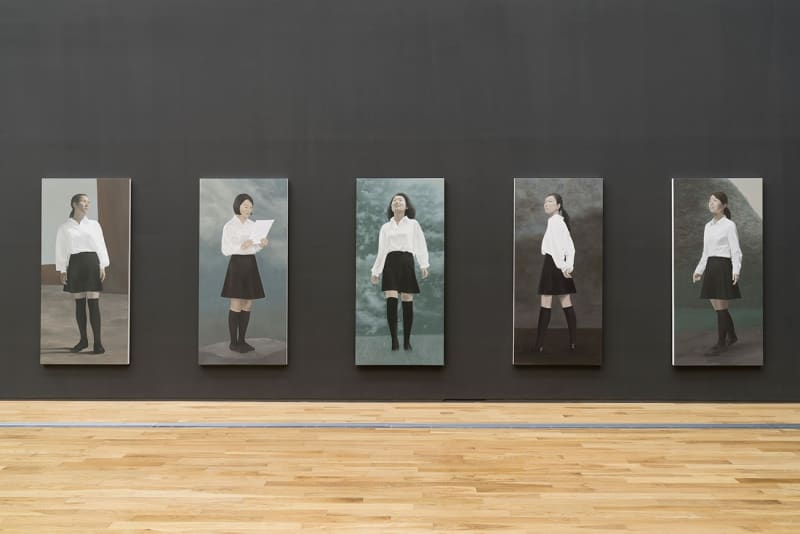Air of Suspicion: into the gap of time
I remember Sunny Kim always looking somewhere far away. Her paintings were creating a thick border neither here nor there. This place was the land and the sea; something alive and dead; and possibly you and me. Or perhaps none of these.
In the early 1980s, the entire landscape of Korea was transformed by rapid economic growth, accompanied by major social and political shifts. In the midst of these grand changes, many Korean individuals and families were compelled to relocate. Sunny Kim was one of them. Although she dreamt of being a high school girl in a uniform, her future was interrupted when she had to leave her homeland. However, after she returned to Korea as an adult, her dream was vicariously realized through the act of painting. When I first encountered Sunny Kim’s series in 2001, I thought that the girls in her paintings were more than mere representation of lost dreams of a Korean American. My question at the time was not “what does she paint?” but rather, “why does she paint?”
At a glance, the images in Kim’s early paintings (e.g., girls in uniforms, schools, field trips, the “ten longevity symbols,” landscapes, etc.) seem to invoke the system of symbols embedded in history, encompassing our conventions, values, norms, institutions, and traditions. But Kim’s images are actually removed from that system. They look opaque and dislocated, but they emit a certain virtue. They often seem to escape the gaze of the viewer, always moving off into the distance. Through her production process, two different timelines intersect: the axis of the reproduced images, borrowed from photographs, films, newspaper scraps, or magazines, and the axis wherein those reproduced images are incorporated into binary allegories of memory and oblivion, fact and fallacy, past and present, growth and death. Through this visual and sensory collage process, the images gradually acquire a psychological three-dimensionality, taking on an air of suspicion. Kim’s meticulously manufactured images enable viewers to simultaneously experience seeing and the sensation of being unable to see, thus revealing the inherent gaps in our sight. Looking at her works, I feel that I am looking at a body without a face or a soul only left with its body. Her girls are not the girl that she could have been; similarly, her school uniforms are not the school uniform, and her landscapes are not the landscape. Perhaps her paintings are not meant to represent any images at all, but rather to serve as a catalyst for awakening the imperfect cognitive system that lies beneath logic. They might exist to enact this very instability.
It was only after about ten years that I could truly begin to ask the question of why Sunny Kim paints. Between 2012 and 2014, Sunny Kim and I produced two performances that were reenactments. In Still Life, Kim projected her own identity onto the girls in her paintings, allowing her to see the girls with her own eyes in an actual space. Similarly, she created Landscape in order to walk into the landscape that the girls saw and walked through. These two performances also reenacted time, as Kim’s painting process was realized not on a canvas, but in three-dimensional space. By transferring the images of her paintings into actual space, Kim attempted to summon the identity of an individual and the temporality of the past, which have been lost to history. But inevitably, the nature of these things can only exist by disappearing. Here, two contradictory states of mind coexist: the eagerness that she might be able to elicit memories of the past within repeatable movements and living bodies in the present, and the concurrent despair that she will not be able to achieve this. Her images seem to aspire to resuscitate that which is dead, to move that which is still, and to restore the time that has been lost. Her images remain adrift, refusing to be read in the language of the real world, as if they themselves want to evaporate, and reminding us of our inherent imperfections.
Read more here.

